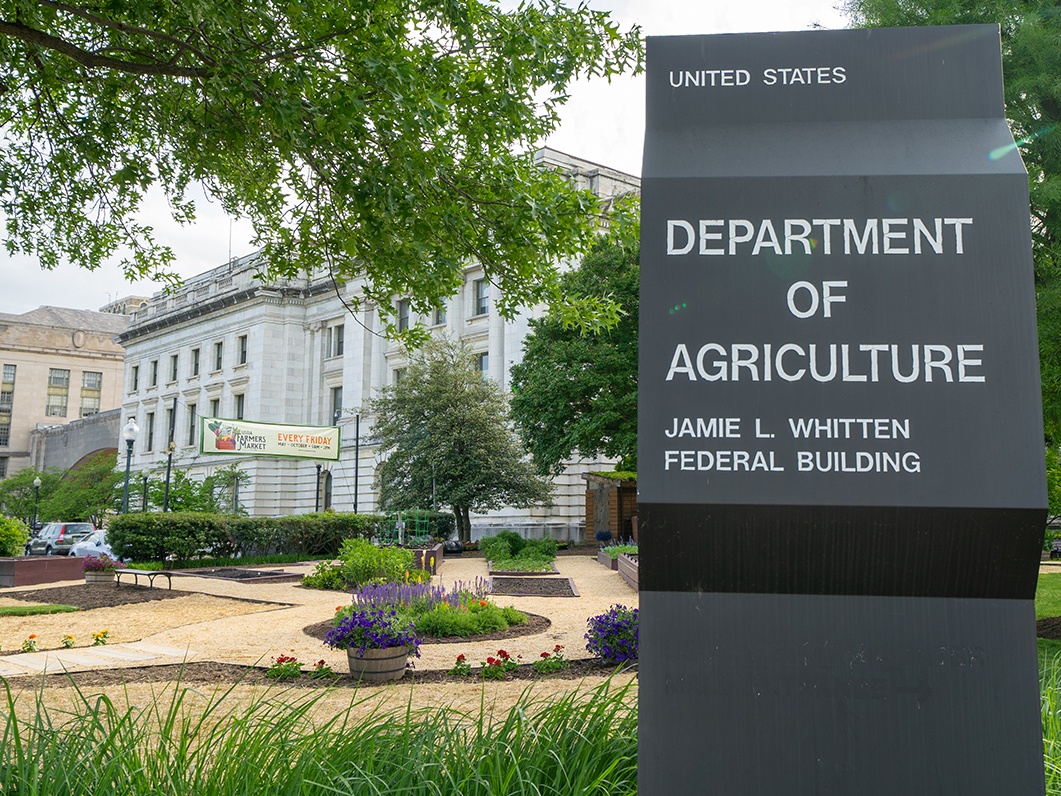USDA updates RFA for Regional Food Business Centers[Editor’s note: This is a story OnionBusiness will follow as it unfolds. We will continue to report on the development of these Regional Food Business Centers and their service within their “targeted” geographical regions.]
In a Sept. 30 press release from the USDA, the Agricultural Marketing Service announced an updated Request for Funding Application pertaining to multiple Regional Food Business Centers to be established in AMS-designated priority areas. The update comes with “with clarifications” in a specific section pertaining to “Eligible Entities” seeking to receive some of the $400 million earmarked for the development of the RFBCs.
In its initial release earlier in September announced the funding measures, and in the updated/clarified release of Sept. 30, the AMS noted that the “availability of approximately $400 million will go towards the development of The Regional Food Business Centers, which will provide coordination, technical assistance, and capacity building to help farmers, ranchers, and other food businesses access to new markets and navigate federal, state and local resources, lowering current barriers to success. The Regional Food Business Centers will assist small and mid-sized producers and food and farm businesses with the goal of creating a more resilient, diverse, and competitive food system.”
The clarification is for Section 3.1, and the update can be found at Request for Funding Application (RFA) to RegionalFoodCenters@usda.gov.
The late September release reiterated the RFBCs are targeting priority areas, noting, “AMS is currently accepting applications from organizations across the nation to establish at least one Regional Food Business Center in the following priority areas:
- National Tribal Center
- Colonias (counties on the US/ Mexico border)
- Persistent poverty or other communities of high need/limited resources areas of the Delta and the Southeast
- High need areas of Appalachia “
And it also linked to an updated list of FAQs at Frequently Asked Questions (FAQs) as well as a USDA-hosted a webinar that was presented Sept. 19, with the link at September 19, 2022 webinar. Leading into the FAQs, the AMS said, “The USDA Regional Food Business Centers will support a more resilient, diverse, and competitive food system. These Regional Food Centers will support producers by providing localized assistance to access local and regional supply chains, including linking producers to wholesalers and distributors. They will provide technical assistance needed to access new markets, access to federal, state, and local resources, and will assist small- and mid-sized producers in overcoming barriers to market access, with a focus on underserved farmers, ranchers, and food businesses. Below is a sampling of the questions and answers found at the link:
- Question: Are there priority considerations for the USDA Regional Food Business Centers program?
Answer: Yes, USDA intends to select at least one Regional Food Business Center that serves each of the following: Colonias (counties on the US/Mexico border); High need/limited resources areas of the Delta and the Southeast; and high need areas of Appalachia. AMS will also fund one national Tribal Food Business Center. See section 1.4 of the RFA for more on regions.
2. Question: Do the funding priorities outlined in the RFA mean that four business centers are already assigned to specific areas? Has USDA determined the regions the Regional Business Centers will serve?
Answer: No, the Regional Food Business Centers have not been chosen or assigned yet and regions have not been determined. USDA has identified four High Priority Areas (Colonias; High need/limited resources areas of the Delta and the Southeast; high need areas of Appalachia; and a National Tribal Center), but organizations/partnerships that will serve those areas have not been selected. All applications will be reviewed and selected after the application deadline of November 22, 2022. We intend to select a minimum of six Regional Food Business Centers. See section 1.4 of the RFA for more on regions. (9/29/22)
Question: What is the preferred structure of the Partnership?
Answer: Partnerships must meet the criteria outlined below, however outside of these criteria there is not a “preferred structure” for how a partnership is established or what type of eligible entities make up a partnership.
A Partnership is an agreement among three or more eligible entities (as outlined in Section 3.1) representing at least two of the eligible entity types and must be physically based in the region that they are applying to serve (excluding the tribal center, which has nationwide reach). Each partnership will designate a lead applicant, also referred to as “the Applicant.”
To demonstrate partnerships, the applicant must submit letters of commitment outlining the partnership. Within 45 days of award, the Applicant will provide USDA with a Memorandum of Understanding between the partners detailing how each partner will contribute to the Regional Food Business Center. Applications should include engagement from multiple sectors such as local, state, tribal, or regional governments, tribal-serving organizations, food policy councils, producers and/or producer organizations, universities, urban and rural food system stakeholders, philanthropy, and entities across the food value chain and supply chain, such as distributors, processors, food hubs, retailers, and underserved communities and agricultural businesses. See RFA Section 3.1 for more on eligible entities.
Question: Does “Applicant” refer to every entity and partner included in the application or just the lead organization who applies on behalf of the partnership?
Answer: “Applicant” refers to the primary/lead organization that submits the USDA Regional Food Business Centers application on behalf of the partnership and will be responsible for accepting and administering the agreement if one is awarded.
Question: How can I get in touch with staff at AMS to talk about applying for a Regional Food Business Center cooperative agreement?
Answer: Please email RegionalFoodCenters@usda.gov and a member of our team will respond to your email within 2 business days. AMS is also hosting Office Hours to take questions about the Regional Food Business Centers.
Question: Can USDA Regional Food Business Center funds be used to purchase land or buildings?
Answer: No. It is unallowable to use grant funds for the acquisition of buildings, facilities, or land or to make additions, improvements, modifications, replacements, rearrangements, reinstallations, renovations or alterations to an existing building or facility (including site grading and improvement, and architecture fees). Funds may be used to rent a building or facility for project-specific purposes, during the project’s period of performance.
Note: AMS offers architectural design technical assistance at no cost.
Question: Can funds be used for construction?
Answer: No, Regional Food Business Center funds may not be used for construction and property acquisition, per uniform guidance on federal financial assistance. All AMS awards are subject to the terms and conditions, cost principles, and other considerations described in the Program Specific (pdf) and AMS General Terms and Conditions (pdf).
Note: AMS offers architectural design technical assistance at no cost.
Question: What are the requirements and reporting timelines for administering a USDA Regional Food Business Centers cooperative agreement?
Answer: The grantee’s administrative duties for the USDA Regional Food Business Centers Program (including reporting requirements) are explained in more detail in the AMS General Terms and Conditions (pdf)
5. Question: Are administrative fees allowable under Regional Food Business Centers?
Answer: The USDA Regional Food Business Centers Program allows for the inclusion of indirect costs (also known as Facility & Administration Fees) as part of the project budget. More information can be found in the Section 4.6.3 of the RFA. For additional information and answers to specific questions, contact the USDA at RegionalFoodCenters@usda.gov.


